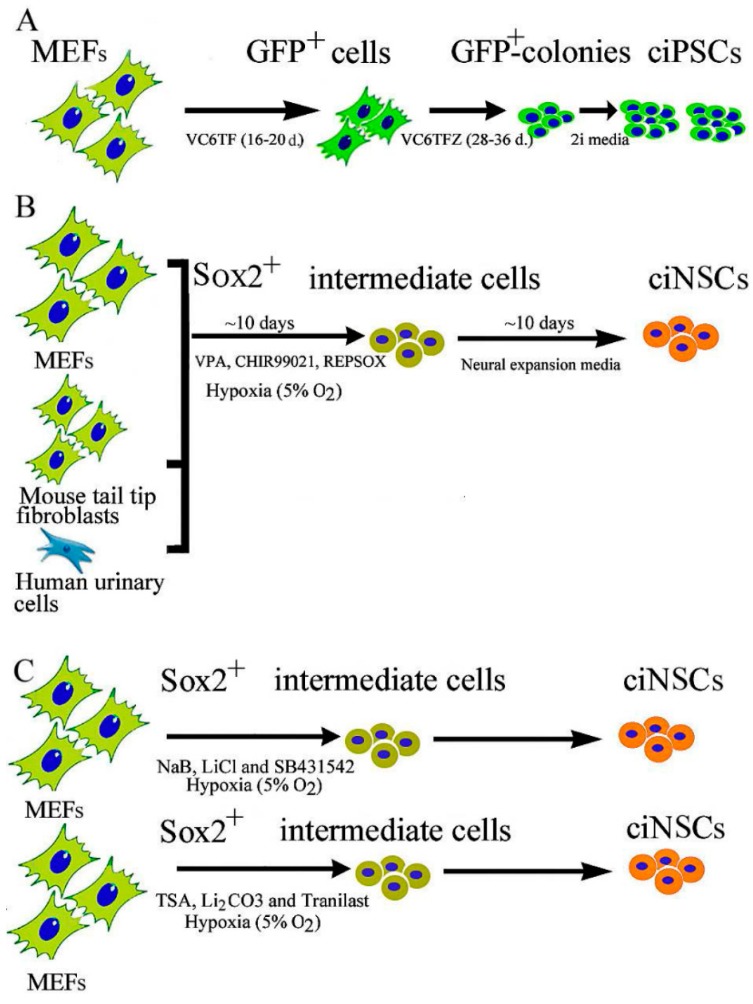Figure 1.
Chemically induced reprogramming of ciPSCs and ciNSCs. (A) A schematic diagram showing direct iPSC reprogramming from MEF using the small-molecule cocktail, VC6TF (VPA, CHIR99021, E-616542, Tranylcypromine, Forskolin), and VC6TFZ (VPA, CHIR99021, E-616542, Tranylcypromine, Forskolin and DZNep) followed by application of two MEK and GSK3-β inhibitors, also known as “2i”, to finalize chemical reprogramming. Using a doxycycline (DOX)-inducible GFP-Oct4 expression screening system, ectopic GFP-Oct4 expression was induced during the first round, followed by DOX withdrawal and small molecule treatment. Epigenetic modulators, particularly 3-deazaneplanocin A (DZNep), an S-adenosylhomocysteine hydrolase inhibitor, were later added along with MEK and GSK3-β inhibitors (2i), to achieve complete reprogramming; (B) The scheme of direct ciNSC reprogramming from MEFs, mouse tail fibroblasts, and human urinary cells using the small-molecule cocktail VCR (VPA, CHIR99021, and Repsox) and physiological hypoxia; (C) A schematic diagram showing direct ciNSC reprogramming from MEF using alternative cocktails NLS (sodium butyrate (NaB), Lithium chloride (LiCl) and SB431542) and TLT (Trichostatin A (TSA), Lithium chloride (Li2CO3) and Tranilast) and physiological hypoxia (5% O2).

